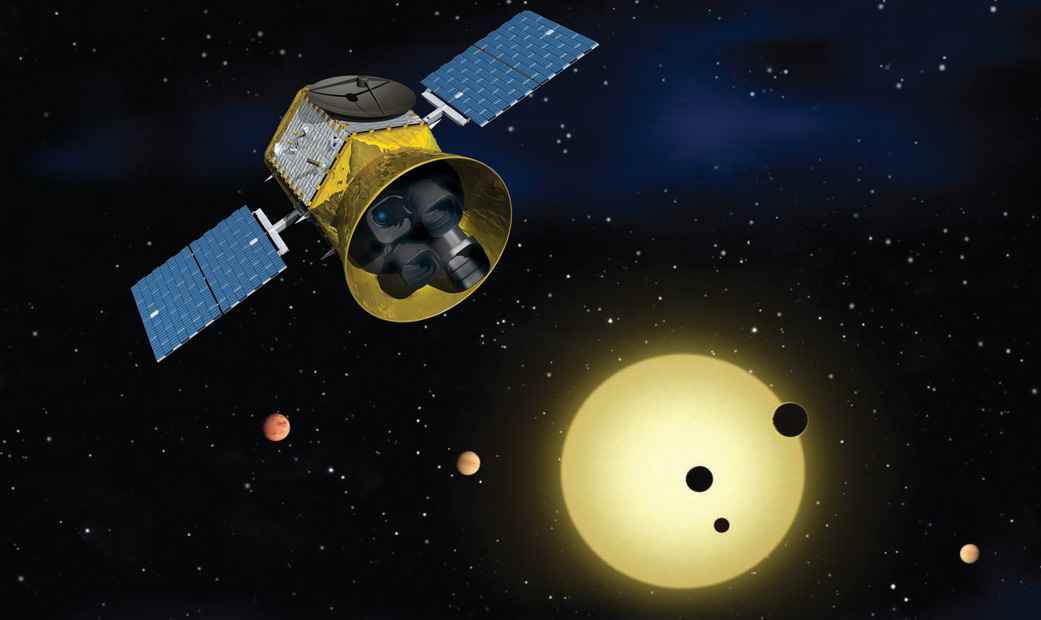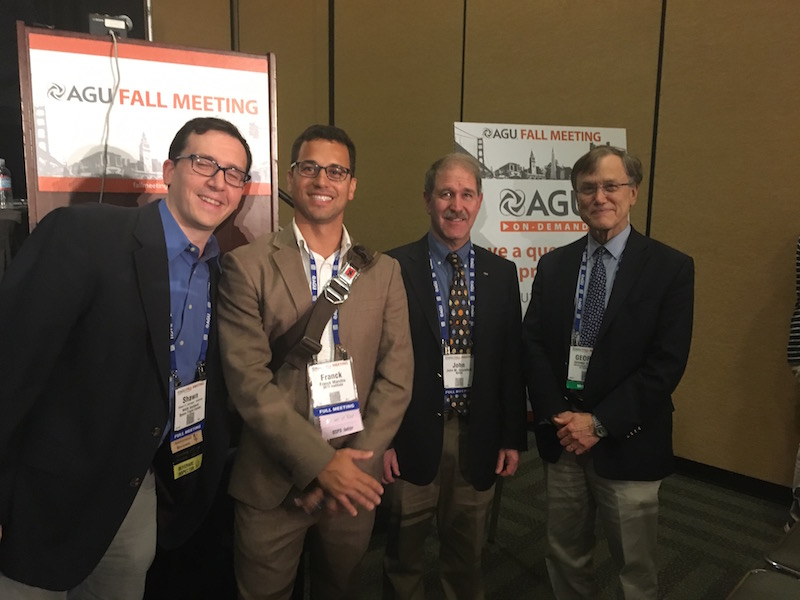Fall AGU meeting: Detection and Direct Imaging of Habitable Exoplanets
Let’s end this political hangover. It is time to fight
November 9, 2016An AGU 2016 Session on Solar System Small Bodies
December 14, 2016 AGU Fall meeting is starting tomorrow. I co-organized a session entitled “Detection and Direct Imaging of Habitable Exoplanets: Progress and Future” to discuss the potential of new and future facilities and modeling efforts designed to detect, image and characterize habitable exoplanets, studying their formation, evolution and also the existence of possible biospheres. Topics that are covered in this session include signs of exoplanet habitability and global biosignatures that can be sought with upcoming instrumentation; instrument requirements and technologies to detect these markers; strategies for target selection and prioritization; and impacts of planetary system properties, ground-based and space telescope architectures.
AGU Fall meeting is starting tomorrow. I co-organized a session entitled “Detection and Direct Imaging of Habitable Exoplanets: Progress and Future” to discuss the potential of new and future facilities and modeling efforts designed to detect, image and characterize habitable exoplanets, studying their formation, evolution and also the existence of possible biospheres. Topics that are covered in this session include signs of exoplanet habitability and global biosignatures that can be sought with upcoming instrumentation; instrument requirements and technologies to detect these markers; strategies for target selection and prioritization; and impacts of planetary system properties, ground-based and space telescope architectures.
We have two invited talks, one by George Ricker on TESS and a second one by Shawn D Domagal-Goldman on HabEx, two NASA missions that could play a major role on identification and characterization of Earth-Like exoplanets.
Conveners & Chairs:
Franck Marchis
SETI Institute Mountain View
Ramses M Ramirez
Cornell University
Douglas A. Caldwell
SETI Institute Mountain View
Location: Room 2020 – Moscone West
Schedule of the Talks:
13:40 P13C-01 The Transiting Exoplanet Survey Satellite (TESS): Discovering Exoplanets in the Solar Neighborhood (Invited)
George R. Ricker and TESS Science Team
13:52 P13C-02 HabEx: Finding and characterizing Habitable Exoplanets with a potential future flagship astrophysics mission (Invited)
Shawn D Domagal-Goldman et al.
14:04 P13C-03 Next Generation Telescopes for Terrestrial Exoplanet Characterization
John M Grunsfeld et al.
14:16 P13C-04 Exoplanet detection and characterization with the WFIRST space coronagraph
Bruce Macintosh et al.
14:28 P13C-05 Enhancing Direct Imaging Exoplanet Detection and Characterization with Astrometry
Eduardo Bendek and Ruslan Belikov
14:40 P13C-06 Imaging and characterizing exo-Earths at 10 microns – The TIKI project
Franck Marchis et al.
14:52 P13C-07 Systematic Search of the Nearest Stars for Exoplanetary Radio Emission: VLA observations in L and S Bands
Daniel Winterhalter et al.
15:04 P11A-1845 Modeling Exoplanet Interiors From Host Star Elemental Abundances
Brandi Hamilton and Douglas Green
15:16 P13C-09 Long-Term Stability of Planets in the Alpha Centauri System
Jack J Lissauer and Billy Quarles
15:28 P13C-10 3D Modeling of the H2O Profile of Temperate Earth-Size Planets around Late-Type Stars, and the Signatures in Transit Spectra
Yuka Fujii et al.
Schedule of the Posters:
P11A-1842 Modeling Molecular Hydrogen Emission in M-Dwarf Exoplanetary Systems
William Ray Evonosky et al.
P11A-1843 Feasibility studies for the detection of atomic oxygen exospheres of terrestrial planets in the habitable zone of a low-temperature star with a UV space telescope
Hiroki Horikoshi et al.
P11A-1844 Cloud and Haze in the Atmospheres of Wide-Separation Exoplanets
Renyu Hu
P11A-1846 Multifractal Analysis of Expoplanetary Spectra
Sahil Agarwal et al.
P11A-1847 By Inferno’s Light: Characterizing TESS Object of Interest Host Stars for Prioritizing Our Search for Habitable Planets
Cayman T Unterborn et al.
P11A-1848 Dysonian SETI as a “Shortcut” to Detecting Habitable Planets
Jason Thomas Wright
See you there,
Clear Skies
Franck Marchis
PS: Unfortunately I did not take a group picture with all our speakers after the session. However, I have a picture taken with our invited speakers. From left to right: Shawn D Domagal-Goldman, Franck Marchis, astronaut John Grunsfeld and George Ricker)




